Taxila Museum Pakistan – Secrets of Gandhara Civilization
Taxila Museum Pakistan is a world-renowned museum house with an impressive collection of artifacts from the ancient city of Taxila. It holds the secrets to one of the fascinating historical civilizations – the Gandhara civilization, which spanned over 1000 years. It is one of the best places to visit in Taxila, which features up to 7000 well-displayed artifacts with up to 30,000 artifacts preserved in the reserve collection.
Here’s everything you need to know about this ancient yet captivating history.
History of Taxila Museum
Located in the famous historical city of Taxila in the heart of Rawalpindi district, Punjab province of Pakistan, this Museum is a sight to behold with its extensive collection of Gandhara Art. Sir John Marshall, the former Director General of Archaeological Survey of British India, excavated at Taxila between 1913 and 1934. It was left to Pakistani archaeologists to continue their examination of the Taxila Valley after Independence, and they found hitherto undiscovered antiquity of this city. All the artifacts discovered through excavating various archaeological sites dispersed around the Taxila region, such as Sirkap, Mohra Muradu, Bhir Mound, Giri Fort, Badalpur Buddhist Stupa, and Monastery, which are on display in Taxila Museum. As you ponder upon the artifacts, the creativity of Gandharan people who lived thousands of years ago will amaze you. Through these artifacts, you can learn about Hinduism, Buddhism, and Jainism, as well as the importance of tolerance and acceptance of other religions. Taxila museum covers the historical Gandhara Civilization, one of the world’s earliest civilizations, and its beliefs and way of life. Sir Alexander Cunningham, who found Taxila’s ruins in the middle of the 19th century, deserves credit for the site’s designation as a UNESCO World Heritage Site in Pakistan in 1980.
Who built the Taxila Museum?
Lord Chelmsford, the former Viceroy and Governor-General of British India laid the Taxila Museum’s foundation in 1918. Sir Muhammad Habibullah, Member for Education, performed the inauguration ceremony on April 5, 1928. The first curator of the Taxila Museum is Mr. M.N. Dutta Gupta.
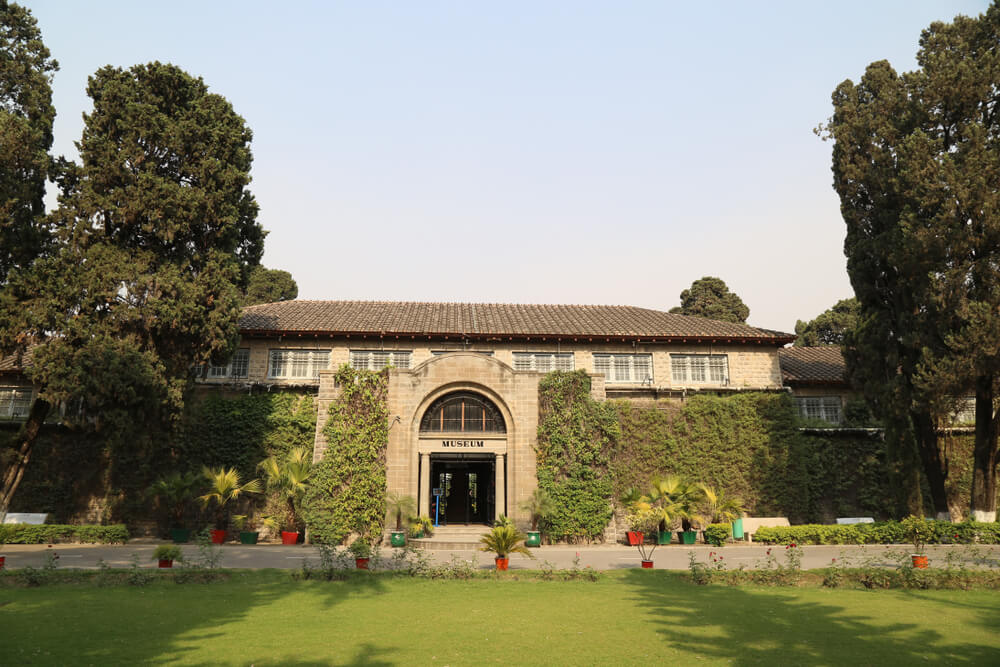
The Museum showcases the rich cultural heritage and numerous accomplishments of the Taxila people over the past 4,000 years.
Some Unique Artifacts Inside Taxila Museum
This historical heritage landmark is famous for housing a rich collection of stone, stucco, and terracotta sculptures from Buddhist art, sacred relics, ancient coins, pottery, jewelry, weapons, utensils, and numerous other ethnographical and historical artifacts. Mainly, the Museum exhibits artifacts from 600 BC to 500 AD. People can find a total of twelve Buddhist stupas in the Museum. The archaeologists decided to repair and renovate some of the stupas to add a realistic touch, aside from a few repairs. Let’s talk about these fascinating artifacts in detail.
Burnt Birch Bark Manuscripts in Brahmi and Sanskrit Languages
Excavations led to the discovery of inscriptions now featured in the Taxila Museum—written in Aramaic, Kharosthi, Brahmi, and Sanskrit languages; all the manuscripts and writing material date back to the third century. A fragment of an epigraph written in Aramaic, the official language of the Achaemenid Empire, is inscribed on an octagonal marble pillar excavated from Sirkap. It dates to the third century B.C. and mentions Ashoka, his queen, and his sons. The Aramaic inscription says the rules for the population to follow. The archaeologists excavated the Jaulian Monastery and discovered Burnt birch bark manuscripts. These burnt birch bark manuscripts written in Brahmi and Sanskrit languages are on display in the Museum. It demonstrates that the people of Taxila spoke these languages. Regarding the writing instruments, this Museum is proud of its collection of inkpots and writing tablets made of copper, stone, and earthenware uncovered during the excavations.
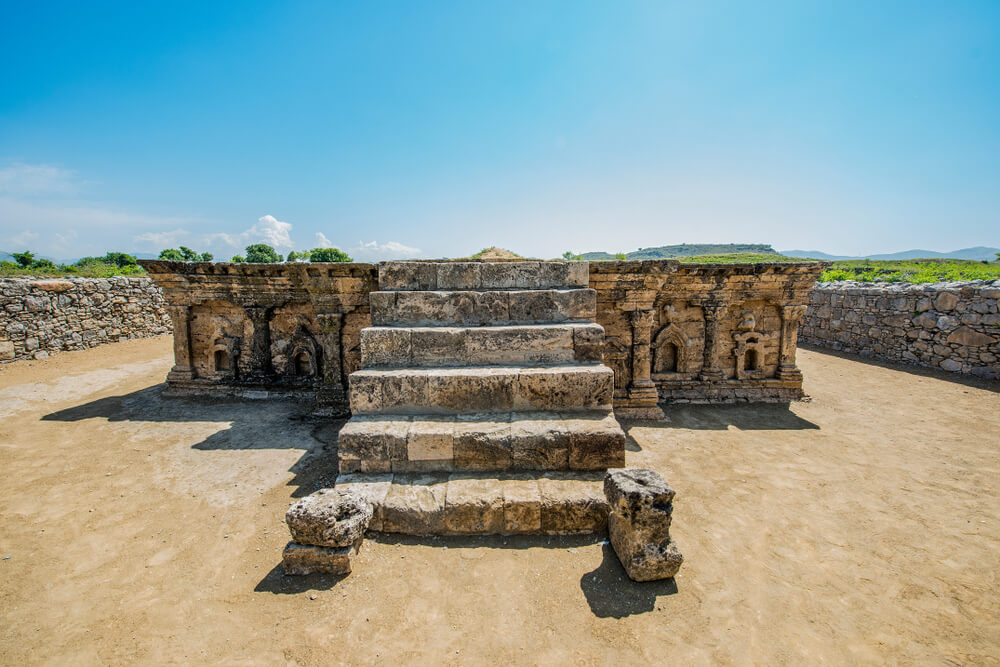
Images of the Sungod
One of the most exciting aspects of the Taxila museum Pakistan is the collection of images of the Sungod, which are some of the earliest representations of this deity. The Sungod is shown in art as a human being with a brilliant sunburst coming out of his head. The images in the Museum show the Sun God as a man dressed as an immortal, sitting atop a lion and controlling a chariot drawn by four horses. Sungod was the symbol of divine power for Greeks, Indo-Europeans, and Gandharan people.
Gilded Image of Buddha
You’ll find some of the most exquisite gilded images of Buddha at the Taxila Museum. The craftsmanship is just breathtaking. The work displayed here shows that the city was a great hub of study and culture. The images you’ll see are some of the oldest examples of Buddhist art worldwide. They’re an essential part of history, and it’s worth taking the time to appreciate them. The gilded stucco sculpture, which once occupied a niche, shows the Buddha meditating with both hands on his lap, clad in a simple monastic robe. His right hand’s back is resting on the left hand’s palm. During his final meditation under the Bodhi tree, he made this gesture upon reaching enlightenment. This gesture depicts knowledge and wisdom. The Bodhisattvas who served as the Buddha’s attendants are flanking the primary figure.
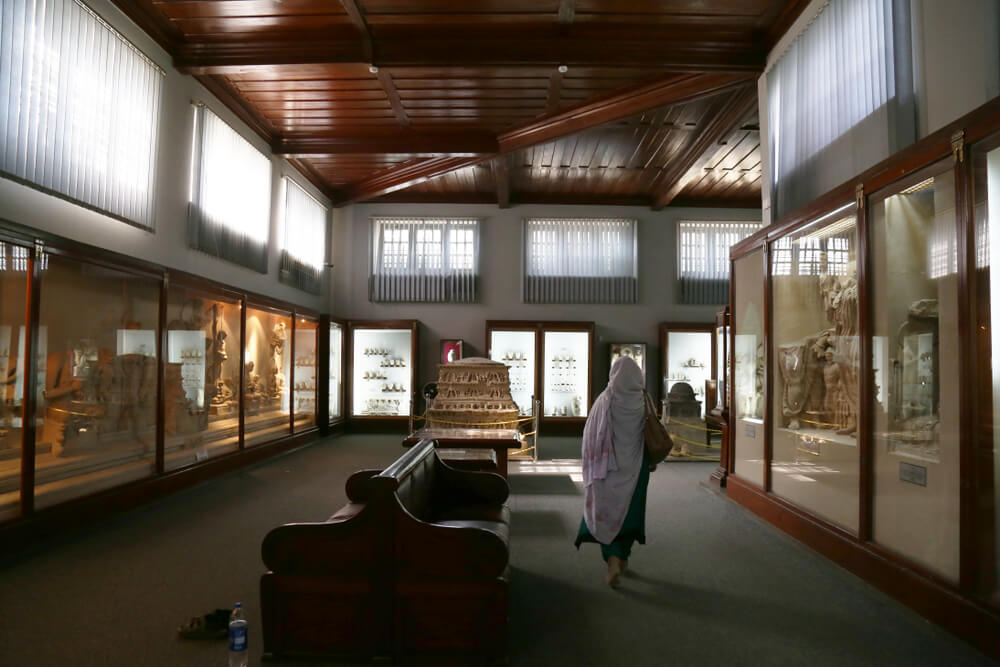
Mohra Moradu Stupa
During the Mohra Moradu Stupa excavations and monastery, archaeologists uncovered a Buddha stucco sculpture dating back to the third century and depicted it in the meditation attitude. This statue of Buddha is on display in the Taxila Museum, both his hands lying in his lap with the palms facing upward. On top of the left hand is the right hand. This well-known gesture represents caution and prudence. During his final meditation, the Buddha attained enlightenment while standing in this posture.
The archaeologists discovered another unusual artifact from the ruins of the Mohra Moradu Stupa, which is a stucco sculpture of Haloed Standing Bodhisattva dressed in royal robes and wearing royal jewelry. Along with highlighting the figure’s royal status, the enormous halo around his head also alludes to the Buddhist symbolism of light. In the Gandharan Buddhist tradition, this sculpture of Bodhisattva has become a distinctive icon.
Surgical Instruments & Weapons
The Museum features a sizable collection of artifacts and instruments discovered while excavating the Taxila valley’s ancient sites. The most fascinating of them are the instruments of goldsmiths, farmers, potters, and surgeons. The displayed collection of surgical instruments includes old scissors, scalpels, forceps, needles, and tweezers.
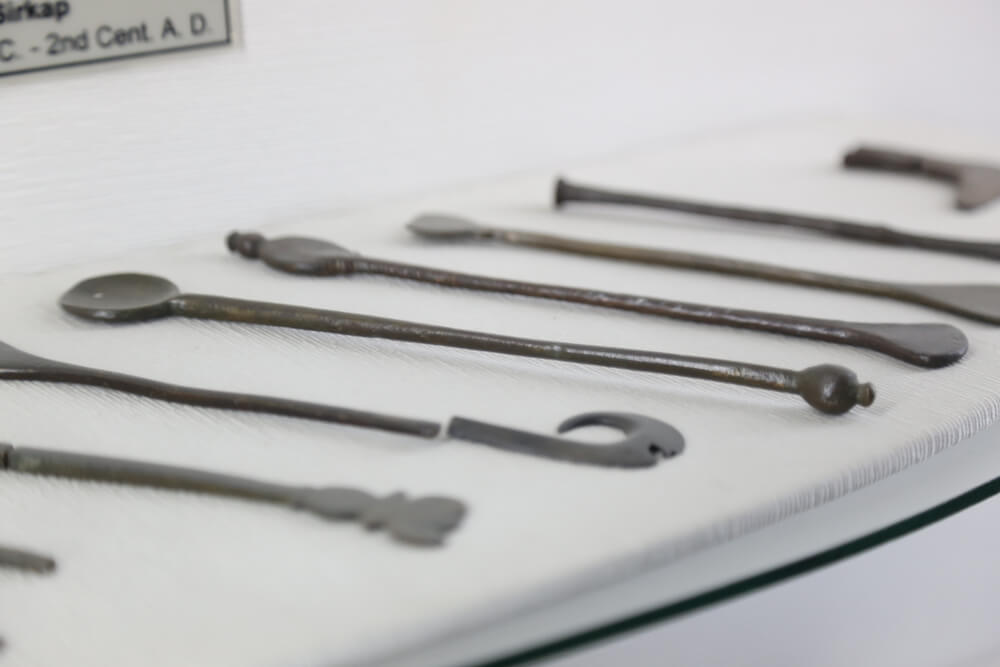
As a transitional area between the hills of Central Asia and the alluvial plains of the Indus River, the region of Taxila was continuously subjected to invasions because all invaders from the northwest crossed the land of Taxila. Excavations have yielded many weapons. Displayed in one of the galleries of the Taxila museum are many weapons, including swords, spearheads, arrowheads, spears, daggers, and armor- everything you might find in an ancient hoard.
Fresco Painting
In a monastery known locally as Jinna Wali Dheri, the Department of Archaeology found pieces of a painting on a stucco plaster wall. This painting is on display in one of the galleries of the Taxila Museum. The fresco painting shows that the followers of Buddha are sitting around him and listening to his sermon carefully. This painting was skillfully painted between the third and fifth centuries C.E. in a blue hue with a hint of yellow.
Daily Routine Use Objects
Daily utensils from the sixth century BCE to the fifth century C.E. are on display in everyday objects found at the Taxila archaeological sites of Bhir Mound and Sirkap. In the gallery, you can see terracotta utensils, earthenware, metal artifacts like frying pans, shields, and gold and silver jewelry, as well as many other things, including toys for kids, toilet paper, and various locks, bolts, and keys. Iron, copper, lead, and bronze are the primary metals used in the metalware. This collection also includes items made of ivory, surgical and harvesting instruments, grinding stones, and ancient manuscripts. A mannequin wearing duplicate jewelry is a visual reconstruction of the traditional Gandharan dress and aesthetics. These artifacts offer a window into the religious, economic, social, and domestic lives of the inhabitants of this prehistoric cultural area.
Various toilet trays discovered from Sirkap are on display. There are probably many uses for these artifacts. The people of old times used these palettes or toilet trays as liturgical vessels, containers for cosmetics, libation trays, and votive items. These toilet trays are featuring Swastika pattern on the inner side.
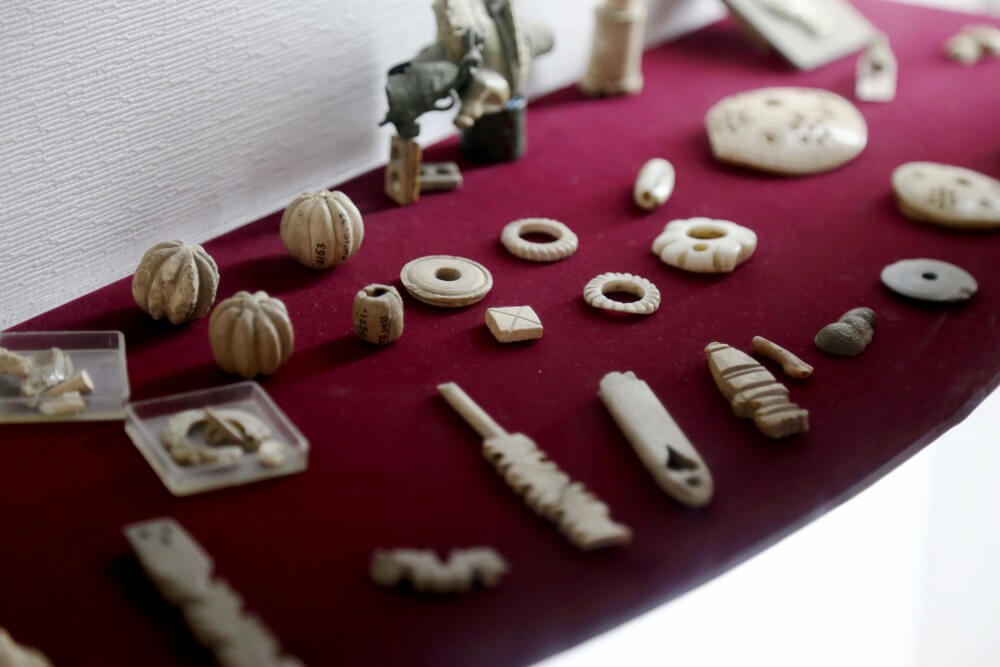
Another exquisite object on the show is a terracotta cooking pot or jar lid decorated artistically with trees, peacocks, and cross-hatching within a circular frame.
Large Collection of Coins
This gallery features the ancient coins of the Prehistoric period. Coinage in the past frequently included symbolic allusions to the governing kings and was made of metals like gold, copper, and silver. Ancient coins dating back to the Moriya period, which lasted from the fourth to the sixth century B.C., are kept in a sizable collection in the Taxila Museum. Each coin shows symbols and images of great importance to the people of old times. There are various sorts of currencies displayed in this Museum, including:
- Punch Marked coins of 6th Century B.C.
- Coins of Shahi Kings of Kabul and Gandhara.
- Rare bar copper & antique silver coins.
- Indo Greeks coins, including a rare bronze coin of Alexander the Great.
- Unique Seals were used as coins by the people of Indus valley.
- Numerous other unique coins of Indo Scythians, Indo Parthians, Guptas, Kushans, Indo Sassanians & Hindu Shahi dynasties.
Cult Objects
During his excavations at the Dharmarajika stupa in 1916, Sir John Marshall found a shrine containing the Buddha’s remains within a monastery cell. The process of preserving Buddha’s remains inside a stupa, described in a silver scroll found at the shrine, is fascinating.
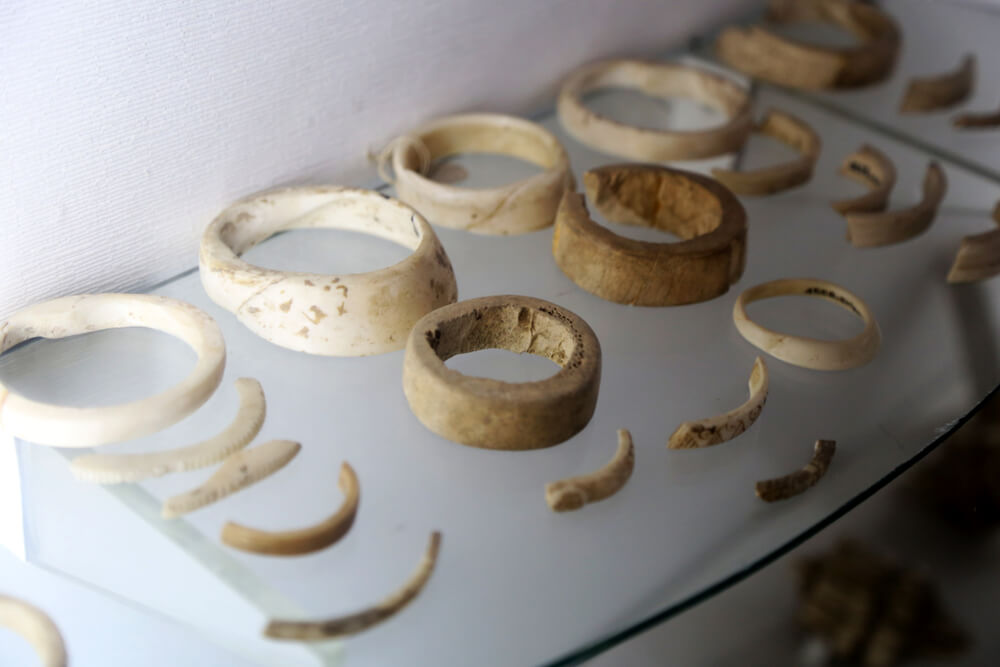
Several replicas of sacred stupas are also on display. The Buddhist people used Stupas for meditation and worship purposes.
Crockery and Office Furniture of Sir John Marshall
When you visit the Taxila Museum, one of the most interesting displays is the pottery and office furniture of Sir John Marshall. The pottery is pretty standard for the time, with simple designs and floral motifs. But it’s the office furniture that’s fascinating. Marshall’s excavations yielded various fossils and ancient specimens that are now beautifully preserved in the Museum. The wooden chair is also unique. It has a leather seat, a luxury item in the old times, and intricate carvings on the backrest impress customers or guests. John Marshall’s tea cups and dinner plates are also on display.
Why is Taxila Museum famous?
The Taxila Museum Pakistan is renowned for having a diverse collection of stucco sculptures, among many other items. The Archaeological Museum of Taxila is home to most artifacts and statues discovered during the excavation in and around the area. Approximately 7,000 artifacts and antiquities are displayed throughout the Museum, each illustrating the history, culture, and achievements of a long-forgotten civilization.
How to Reach Taxila Museum from Islamabad?
Located 35 kilometers from North West of Islamabad, Taxila Museum is an hour-long drive away. Using a car is the fastest and most practical way to go from Islamabad to Taxila. You can travel via the Srinagar highway and Grand Trunk Road.
Taxila Museum Ticket Price and Timings
This prestigious site of great historical significance is open to visitors every day except on the first Monday of each month and on all Islamic holidays. Visiting hours during Summers are from 8:30 AM to 5:00 PM and during winters are from 9:00 AM to 4:00 PM. The ticket prices vary from Rs.10 for Children, Rs. 20 for adults, and Rs.500 for foreign tourists.
Location of Taxila Museum Pakistan
Located in the famous historical city of Taxila in the heart of Rawalpindi district, Punjab province of Pakistan, the archaeological Museum of Taxila is a dream come true for history buffs. Bhir Mound is a 5-minute walk from Taxila Museum, located on the Kalabagh-Nathia Gali Road (N-125).
Conclusion
Without visiting the magnificent Taxila Museum, a trip to Taxila is not complete. The Taxila museum of Pakistan is a fantastic location to see a variety of ancient artifacts of bygone eras. The gilded images of Buddha and the Sun god statue are must-sees. Don’t forget to look at the displayed cult artifacts and excavations.
